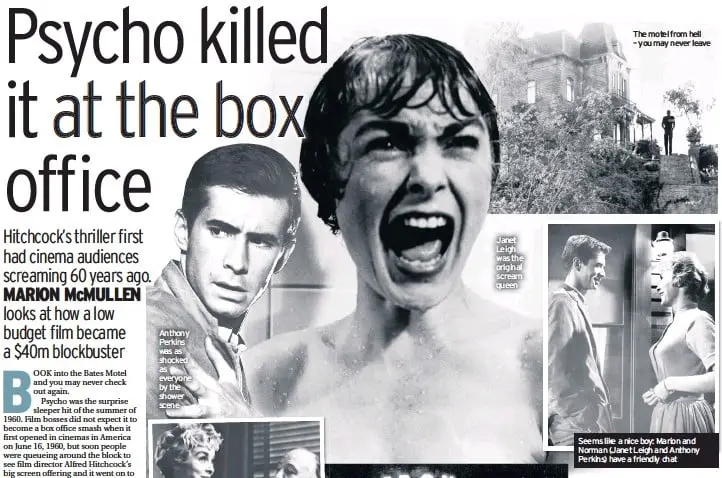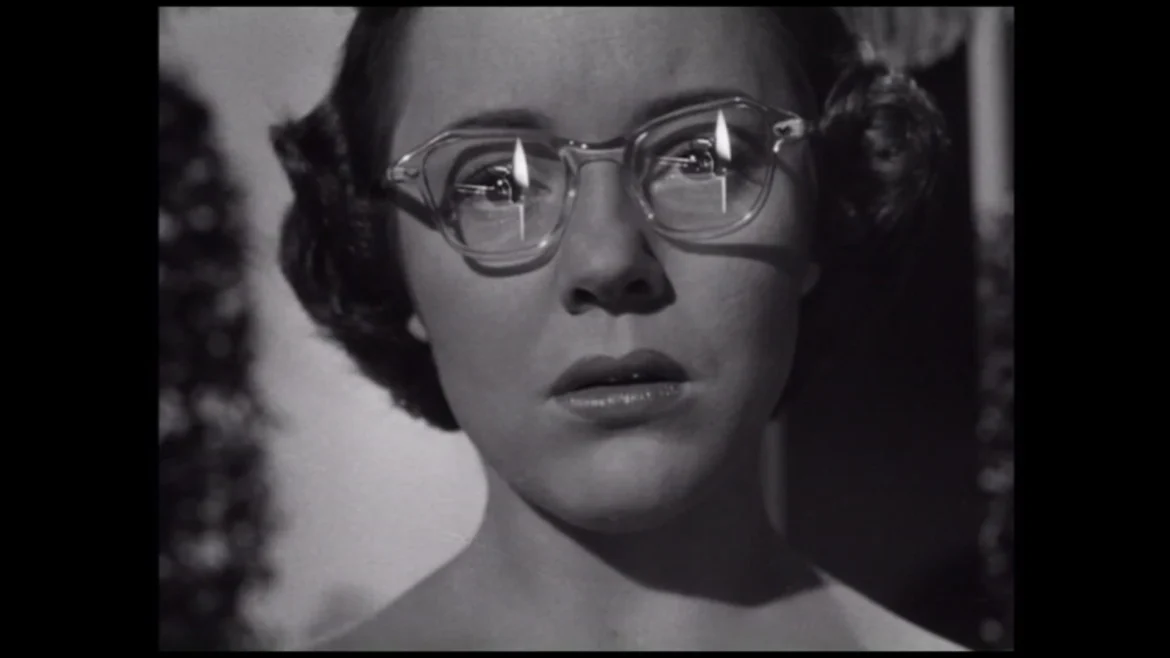For this LitStack Rec, we’re recommending two books, Alfred Hitchcock/Truffaut, and Boy Erased.

In this LitStack Rec:
A Definitive Study of Alfred Hitchcock, by Francois Truffaut, trans. by Helen Scott (1966)
& Hitchcock/Truffaut, a documentary film by Kent Jones (2015)
Before he began directing, Francois Truffaut was a film critic, and before that, a voracious viewer of films. The director who was a central of French cinema’s New Wave began his movie habit at the age of eleven. From then on films quickly became an obsession—seeing them, reading about them, logging filmographies. Truffaut often saw three to four films a day, and repeatedly saw his favorites as many as ten to twenty times. This immersion into the art of film comprised Truffaut’s education, one he brilliantly parlayed into work as a journalist and film critic for Cahiers du Cinema. In 1954, at the age of twenty-two, he published the ground-breaking essay, “A Certain Tendency in the French Cinema,” which formed the basis of what would become auteur theory, the director as author.
A fascinating aspect of the self-taught Truffaut is his youthful aspiration to interview directors whose work he revered. He did this not out of ambition, but as a means to understand how the films were made, to unlock his heroes’ secrets. And as a young man, with the help of his lifelong friend Robert Lachenay (who also became a film critic and documentary filmmaker), the two systematically contacted directors (most of whom agreed to be interviewed), guilelessly offering “free publicity” in return for participation.
One of the first American films Truffaut encountered was by Alfred Hitchcock, the 1948 film Rope. At the time, Alfred Hitchcock wasn’t garnering the rave reviews he would for films like Strangers on a Train or Rear Window, but Truffaut was instantly captivated, recognizing in the English director’s work the qualities he loved most about film: the nod to film noir, the auteur’s view, the careful design in Hitchcock’s technique.
By the mid-sixties, Truffaut had achieved his own fame with the now-classic film, The 400 Blows, which won the Cannes Film Festival Award for Best Director. Soon after, Truffaut, a longtime admirer of Alfred Hitchcock’s work, wrote to him. “There are many directors with a love of cinema,” Truffaut wrote, “ but what you possess is a love of celluloid itself.” Hitchcock was smitten:
“Dear Mister Truffaut,” Hitchcock wrote back, “your letter brought tears to my eyes, and I am very grateful to receive such a tribute from you.”
The interview sessions took place in the summer of 1966, at Alfred Hitchcock’s office at Universal Studios. With Truffaut’s longtime colleague Helen Scott serving as translator, the conversations were recorded and transcribed into the now-classic book A Definitive study of Alfred Hitchcock. The book, copiously illustrated with film stills and storyboards, contains material culled from over thirty hours and fifty tapes, considered by filmmakers as a “bible of film literature.” a virtual master class on filmic technique and auteur theory and practice.
Their conversations form the basis for Kent Jones’ documentary Hitchcock/Truffaut, an eighty-minute version of the book that brings the conversations to life. The interviews translate to film due to the astoundingly perfect condition of the original audio recordings, combined with clips of Hitchcock’s and Truffaut’s films and commentary by contemporary directors—Wes Anderson, Martin Scorcese, Peter Bogdonivich and others, all of whom have studied both directors, and the book, exhaustively. Wes Anderson recalls after years of reading, his copy is no longer a book, “only a stack of pages.”
Truffaut and Hitchcock shared not only professional affinity, but a personal one, which is clear throughout the film. Truffaut confesses, for example, “I always watch a Hitchcock film without the sound,” and indeed, Hitchcock began his career in silent film, and that particular vocabulary of image-driven frame-by-frame storytelling forms the basis of his mature style, and made it influential for decades to come.
The two directors also explore each others process, and there are gems of technical insight. “Film contracts time or extends it,” Hitchcock says, and this can be seen again and again in scenes of violence, tenderness and suspense. For example, describing a shot in The Birds, he explains the thinking behind his choice of an elevated view of Bodega Bay: far below the town burns while a flock of birds careens on the air currents. “If you’re a long way away,” Hitchcock explains, “you’re not committed to any detail.” Great advice for the technique of narrative distance even if film isn’t your medium.
Hitchcock was known for his visual style, but as Scorsese notes, he is also responsible for bringing the subject of obsession to a mass audience, and as a result, the English-born Hitchcock was the first to create an intimate film experience with the American film-going public. “He’s fascinated about what terrifies him,” Scorsese observes, and the auteur-director who, like Truffaut, “wrote with a camera,” made his own personal fears his subject. For example, there’s Hitchcock’s frightening episode as a boy, where at age eight, he was tricked by his father into being locked in the local jail, to “teach him what happens to naughty boys,” and the fear of jails and policeman is palpable in films like The Wrong Man and Marnie.
Of Vertigo, the documentary explains the film was lost in the 1970s and for years went virtually unseen except by a select few who had access to prints. Young filmmakers like Scorsese, who’d heard about its outstanding visual effects and hoped to study it, had difficulty finding copies.
The documentary also gives time to unpacking Vertigo’s plot, an often debated aspect of its success. As Hitchcock explains, rather than explicitly connecting actions, he preferred presenting “a lie that you can hang things on.” As Scorsese marvels, “It’s as if he’s saying, ‘I can’t tell you where things start and end and I don’t care.’”
Devotees of Hitchcock and Truffaut will find both the book and this accompanying documentary essential and rewarding. Learn more about Jones’ documentary here.
— Lauren Alwan
Boy Erased, by Garrard Conley
Growing up in small town Alabama in the 1990s/2000s is not exactly ideal for a young man struggling with the knowledge that he is gay, especially with a father who is soon to be ordained as a Baptist pastor. All Garrard’s friends, his relatives, everyone he knows, believes homosexuality to be a perversion, a transgression against God. It isn’t until Garrard leaves home to attend college that he feels the freedom to even entertain the idea that life could be different, that he might not have to hide forever.
That notion is fleeting, however; following a traumatic first sexual experience he is “outed” to his parents by the very person who assaulted him. Not long thereafter, he agrees to attend a two-week trial program run by Love In Action (LIA), a fundamentalist Christian organization that promises to cure LGBT congregants of their “sexual addictions.” After the trial, Garrard will be assessed as to how long he should remain in the program; most patients stay for at least three months, many stay much longer.
Garrard is torn – he doesn’t feel addicted to anything, but at every turn he is told that what he feels is wrong. Despite his misgivings, he checks into the LIA facility (in a rundown strip mall); as he makes his way down the narrow hallway to the meeting room, he offers up a prayer: God, I don’t know who You are anymore, but please give me the wisdom to survive this.
Author Conley’s description of his time in the LIA program is chilling. A Twelve Step Program modeled after Alcoholics Anonymous, a 274 handbook that was to be treated as gospel, a relinquishing of any privacy – these were all cornerstones of the process. The reinforcement that homosexuality is a sin, and that gay sex a type of unhealthy addiction was relentless. Patients were constantly pressured to publically share instances of sexual deviance (many of them admitting privately that stories were made up in order to impress the facilitators) and they were encouraged to report their fellow patients, not just for expressing unsuitable thoughts or exhibiting sinful actions, but even for posture that was not “manly” or showing mannerisms that were not appropriate for their gender. Genealogies were scrutinized to find sinful behaviors in families: promiscuity, alcoholism, drug use, mental illness, pornography, gang involvement, abortions, gambling. Nothing was off limits, nothing was sacred.
It truly is difficult to read, but author Conley keeps us grounded by his internal monolog, which allows us to focus on his confusion: he wants to be honest to himself but understands that to do so would hurt others he loves, he believes in God but cannot justify the God of his parents who would condemn him for something he did not ask for or take pride in yet which he cannot in honesty deny. He wants to do the right thing, but everything about LIA feels so very wrong.
What sets this memoir apart, however, is its lack of bile. While what Garrard goes through is hard to read in its insensitivity and almost reprehensible ignorance, he is careful to acknowledge, for the most part, that the people running the LIA program truly felt that they were doing God’s work. Yes, there is more unquestioning adherence to dogma than compassion, which is disheartening. But fortunately Garrard is able to lean on his own faith – and his ability to question that faith – as well as the knowledge that his parents, who did not believe or support his homosexuality, did believe and support him. His mother, especially, allows her love for her son to prove stronger than her religious convictions.
In Boy Erased, there is indeed right and there is wrong, and there is evil as well as salvation. But there are no devils, nor are there saints – there are just people, trying to do the best they can. Unfortunately, some of them are willing to be told what the best is instead of discovering that for themselves, and some of them are blindly led down a supposedly righteous path because it is comfortable, familiar and easy to not question. But there are also those who do not understand, yet are willing to believe that understanding is not necessary in order to embrace another person. Or that God’s love is deep enough to embrace us all. In the end, there may not be acceptance, but there is love.
And that’s a story worth reading.
—Sharon Browning
Other LitStack Resources
Be sure and click on over to read our other LitStack Recs, and check out other articles by Lauren Alwan, as well as Sharon Browning.





